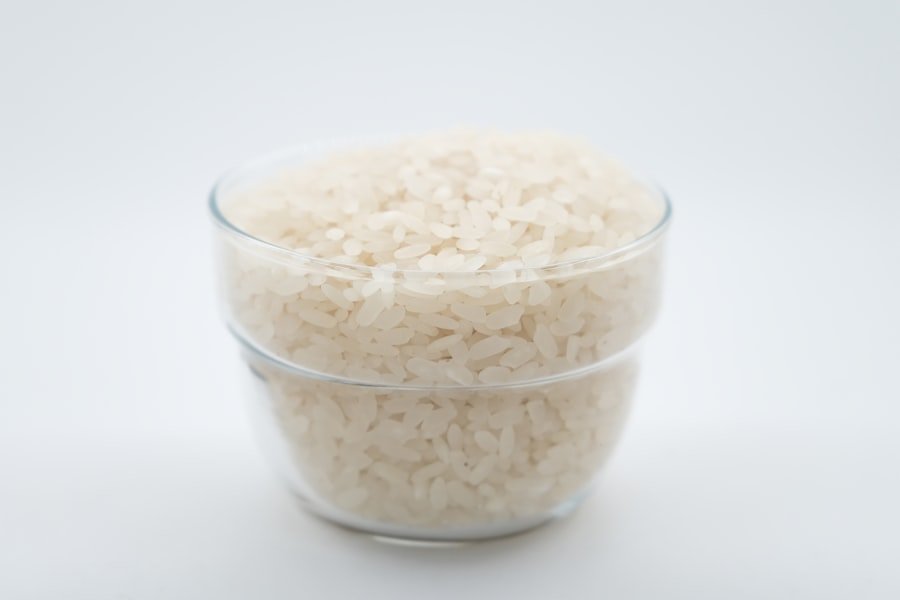Bao rolls, also known as baozi or bao, are steamed buns with a long history in Chinese cuisine. Originating in China during the Eastern Zhou Dynasty (771-256 BC), these filled buns were initially created as a method of food preservation. The steaming process helped maintain the freshness of the fillings for extended periods.
Over time, bao rolls spread throughout China and to other Asian countries, including Japan, Korea, and Vietnam. Each region developed its own variations, resulting in a diverse range of flavors and fillings. In China, bao rolls are commonly consumed for breakfast, while in other countries, they serve as snacks or components of larger meals.
Bao rolls hold cultural significance in China, often associated with festivals and special occasions. They are considered symbols of good fortune and prosperity. In some Chinese regions, eating bao rolls during the Lunar New Year is believed to bring good luck for the coming year.
The popularity of bao rolls has extended beyond Asia, and they can now be found in restaurants and street food stalls worldwide. Their enduring appeal is due in part to their versatility, with both savory and sweet filling options available. The cultural importance and widespread enjoyment of bao rolls have contributed to their status as an iconic dish in many Asian cuisines.
Key Takeaways
- Bao rolls originated in China and have a long history dating back to the 3rd century.
- The ingredients and fillings of bao rolls can vary widely, but commonly include pork, chicken, vegetables, and sweet fillings like red bean paste.
- There are different varieties of bao rolls, including steamed, baked, and pan-fried, each with its own unique texture and flavor.
- Making bao rolls at home is a fun and rewarding process, requiring simple ingredients like flour, yeast, and your choice of fillings.
- Bao rolls have become popular in popular culture, appearing in movies, TV shows, and even as a trendy street food item at food festivals and markets.
The Ingredients and Fillings of Bao Rolls
Bao rolls are a delicious and versatile food made from a simple dough consisting of flour, water, yeast, sugar, and oil. The dough is kneaded until smooth and elastic, then left to rise before being divided into small portions and filled with a variety of ingredients.
The Versatility of Bao Roll Fillings
The fillings for bao rolls can be savory or sweet, and the possibilities are virtually endless. Some popular savory fillings include pork, chicken, beef, and vegetables, while sweet fillings often include red bean paste, lotus seed paste, or custard.
Enhancing the Flavor of Bao Rolls
In addition to the basic ingredients, bao rolls can also be flavored with a variety of seasonings and spices to enhance their taste. Common flavorings include ginger, garlic, soy sauce, and sesame oil, which add depth and complexity to the fillings.
Cooking and Assembling the Bao Rolls
The fillings are typically cooked before being added to the dough, ensuring that they are flavorful and tender when the bao rolls are steamed. The versatility of bao roll fillings allows for endless creativity in the kitchen, and many chefs and home cooks enjoy experimenting with different flavor combinations. Whether you prefer a classic pork filling or something more adventurous like curry chicken or barbecue beef, there is a bao roll filling to suit every taste.
The Different Varieties of Bao Rolls

Bao rolls come in a wide variety of shapes, sizes, and flavors, each with its own unique characteristics and regional variations. In China, the most common type of bao roll is the “baozi,” which is typically round in shape and filled with savory ingredients such as pork or vegetables. Another popular variety is the “xiǎolóngbāo,” which is a smaller, soup-filled bao roll that originated in Shanghai.
These delicate dumplings are filled with a savory broth and meat filling, creating a burst of flavor with each bite. In addition to traditional Chinese bao rolls, there are also many regional variations found throughout Asia. In Japan, “nikuman” are similar to baozi but are often filled with pork and flavored with soy sauce and ginger.
In Korea, “jjinppang” are steamed buns filled with red bean paste or sweetened chestnuts. Vietnamese “bánh bao” are typically larger in size and may be filled with pork, chicken, or mushrooms. Beyond Asia, bao rolls have also gained popularity in Western countries, where chefs have put their own unique spin on this classic dish.
Some restaurants offer fusion-style bao rolls with fillings like barbecue pulled pork, fried chicken, or even tofu for a vegetarian option. These modern interpretations have helped to introduce bao rolls to new audiences and have sparked a renewed interest in this beloved Asian dish.
How to Make Bao Rolls at Home
| Ingredients | Quantity |
|---|---|
| Flour | 2 cups |
| Yeast | 1 tsp |
| Sugar | 1 tbsp |
| Salt | 1/2 tsp |
| Water | 1/2 cup |
| Ground pork | 1/2 lb |
| Green onions | 2 stalks |
| Soy sauce | 2 tbsp |
| Sesame oil | 1 tbsp |
Making bao rolls at home is a rewarding and enjoyable experience that allows you to customize the fillings to your liking. While it may seem intimidating at first, with a little practice and patience, anyone can master the art of making bao rolls. To start, you will need to prepare the dough by combining flour, water, yeast, sugar, and oil in a large mixing bowl.
Knead the dough until it becomes smooth and elastic, then cover it and let it rise until it has doubled in size. While the dough is rising, you can prepare the filling by cooking your chosen ingredients with seasonings and spices until they are tender and flavorful. Once the dough has risen, divide it into small portions and roll each portion into a flat circle.
Place a spoonful of filling in the center of each circle, then gather the edges together and pinch them closed to form a sealed bun. After assembling the bao rolls, they are ready to be steamed until they are puffy and cooked through. This can be done using a bamboo steamer or a metal steamer basket set over a pot of boiling water.
Once steamed, the bao rolls are ready to be enjoyed hot out of the steamer or at room temperature.
Bao Rolls in Popular Culture
Bao rolls have made their mark on popular culture in recent years, thanks in part to their appearance in mainstream media and their growing presence in the global culinary scene. In 2018, Pixar released an animated short film titled “Bao,” which tells the heartwarming story of a Chinese-Canadian woman who creates a sentient bao roll that comes to life as her son. The film was widely praised for its emotional storytelling and beautiful animation, and it helped to introduce bao rolls to audiences around the world.
In addition to their appearance in film and television, bao rolls have also become a popular menu item at many trendy restaurants and food trucks. Chefs have embraced the versatility of bao rolls by creating innovative fillings and incorporating them into fusion cuisine. This has helped to elevate the status of bao rolls from a humble street food to a sought-after dish that appeals to food enthusiasts of all backgrounds.
The growing popularity of bao rolls has also led to an increase in home cooks experimenting with making their own versions of this beloved dish. Social media platforms like Instagram and TikTok are filled with mouthwatering photos and videos of homemade bao rolls, inspiring others to try their hand at creating these delicious steamed buns.
The Health Benefits of Bao Rolls

Nutritious Dough
The dough used to make bao rolls is typically low in fat and can be made with whole wheat flour for added fiber. Additionally, steaming the buns instead of frying them helps to keep their calorie content lower while preserving their soft texture.
Healthy Fillings
The fillings for bao rolls can also contribute to their health benefits when chosen thoughtfully. Lean proteins such as chicken or tofu provide essential nutrients like protein and iron without excess saturated fat. Vegetables like spinach, mushrooms, and carrots can add fiber, vitamins, and minerals to the filling.
A Balanced and Convenient Meal Option
By incorporating a variety of colorful vegetables into the filling, you can create a nutrient-dense meal that is both delicious and satisfying. When enjoyed in moderation as part of a balanced diet, bao rolls can be a flavorful way to incorporate whole grains, lean proteins, and vegetables into your meals. Whether enjoyed as a snack or as part of a larger meal, bao rolls offer a convenient and portable option for enjoying a variety of nutritious ingredients.
Where to Find the Best Bao Rolls
If you’re looking to experience the best bao rolls that culinary culture has to offer, there are several places around the world where you can find exceptional examples of this beloved dish. In China, cities like Shanghai and Beijing are known for their diverse selection of traditional baozi and xiǎolóngbāo that can be found at local teahouses and street food vendors. In Taiwan, “gua bao” is a popular variation that features tender braised pork belly served in a fluffy steamed bun with pickled mustard greens and crushed peanuts.
This iconic street food can be found at night markets throughout Taiwan where vendors compete to create the most flavorful gua bao. In Japan, “nikuman” can be found at convenience stores as well as specialty shops known for their artisanal approach to creating these savory steamed buns. These portable snacks are perfect for enjoying on-the-go while exploring the bustling streets of Tokyo or Kyoto.
For those seeking modern interpretations of bao rolls with innovative fillings and creative presentations, cities like New York City, Los Angeles, London, and Melbourne have seen an influx of restaurants and food trucks offering fusion-style bao rolls that cater to diverse palates. Whether you’re traveling abroad or exploring your own city’s culinary scene, seeking out authentic bao rolls from reputable establishments can provide an enriching experience that celebrates the diversity and creativity of this beloved dish.
If you’re a fan of bao rolls, you might also be interested in learning how to organize your kitchen with stylish crockery cabinets. Check out this article for tips on keeping your kitchen organized and stylish.
FAQs
What are bao rolls?
Bao rolls are a type of steamed bun originating from China. They are typically filled with various ingredients such as pork, chicken, vegetables, or sweet fillings.
How are bao rolls made?
Bao rolls are made from a simple dough of flour, yeast, sugar, and water. The dough is then filled with the desired ingredients and steamed until fluffy and soft.
What are the different types of bao rolls?
There are various types of bao rolls, including savory options such as pork belly bao, chicken bao, and vegetarian bao. Sweet options include red bean paste bao and custard bao.
Are bao rolls healthy?
Bao rolls can be a part of a healthy diet when filled with nutritious ingredients such as lean proteins and vegetables. However, some variations may be higher in calories and fat due to the filling and cooking method.
Where can I find bao rolls?
Bao rolls can be found at Chinese restaurants, dim sum establishments, and some Asian grocery stores. They are also becoming increasingly popular at food trucks and trendy eateries.

